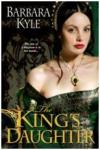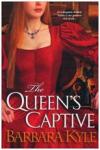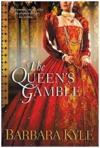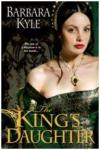A big beautiful welcome today to the multi-talented Barbara Kyle, best known for her amazing historical Thornleigh series. Barbara is a former actor, a formidable author with many books under her belt, and a very helpful workshop leader. In today’s post she tells some of the secrets to research and how it relates to her books. Please consider leaving comments for Barbara and we will both reply where warranted.
“Nugget” Moments in My Search
by Barbara Kyle
Research is the lifeblood of our art. Ask any historical novelist and they’ll tell you that poring over the letters and diaries of our subjects and reading biographies of them and books about their times is a hugely engrossing part of our work. So engrossing, in fact, that I don’t think of it anymore as “research.” To me it’s “The Search.”
It’s like panning for gold. I sit by the riverside day after day sifting through mounds of information sand – solid facts that I need to ground my stories in the truth of the period, but not exactly eye-opening. It’s the nuggets I look for. The details that gleam, the facets that suddenly spark my subject to flesh-and-blood life.
I’d like to share with you a few such nuggets that I alchemized into the life of my books.
The Queen’s Lady featuresHonor Larke, the (fictional) ward of (the real) Sir Thomas More. More was Henry VIII’s chancellor who famously went to the execution block rather than swear the oath that Henry was supreme head
of the church in England, a title Henry created so he could divorce Catherine of Aragon and marry Anne Boleyn. My research revealed that in 1517 More was undersheriff of
London, and that on May 1st of that year the London apprentices rioted and he went with a troop of guards to speak to them. The young men were a furious mob, their torches flaring in the night as they went on a rampage, denouncing foreigners for taking their jobs, breaking into foreign-owned shops, assaulting Italians and Flemings in the streets.
The Nugget. Gleaming at me in my research was the fact that, years after More’s death, Shakespeare had a hand, along with a couple of other authors, in writing a play called “Sir Thomas More” and in it is a scene of the May Day riot in which More, as undersheriff, addresses the furious apprentices. I went to the British Museum and read the folio. It gave me
goose bumps. Shakespeare’s brilliance in writing characters glitters in every line.
More, the lawyer, shames the angry young men by asking how would they feel if they were friendless in a faraway county where they would be the foreigners. Would they not hope to be treated with compassion? He points out an apprentice whose kind Italian master, a foreigner, is giving him a good livelihood and a secure future. With this tolerant rationale More calms the mob. The event is so stirring I used it, reworked to incorporate my created characters, as the opening of The Queen’s Lady.
Nugget #2. Sir Thomas More had two young wards, and my research revealed the eye-opening situation of the Tudor Court of Wards. All orphans, male and female, with significant property became wards of the monarch who then sold the wardships to gentlemen who bid for these prizes. Why? Because the guardian got to pocket the rents and revenues of the ward’s lands until the ward came of age, at which time the guardian often married the ward to one of his own children, keeping the wealth in the family. I couldn’t resist. I created another ward for Sir Thomas More, Honor Larke, to be my novel’s heroine. (Read about how the Tudors exploited wardships in this post: “For Sale: Rich Orphans – the Tudor Court of Wards”.)
 The King’s Daughter features Isabel Thornleigh, Honor’s daughter, who joins the uprising led by Sir Thomas Wyatt, a true event in which the rebels sought to unseat Mary I from the throne in the winter of 1554. The only surviving child of Henry VIII and his pious first wife, Catherine of Aragon, Mary was ruled by religious zeal. As queen she oversaw the burning of hundreds of English men and women, earning the name her subjects gave her in her lifetime: “Bloody Mary.”
The King’s Daughter features Isabel Thornleigh, Honor’s daughter, who joins the uprising led by Sir Thomas Wyatt, a true event in which the rebels sought to unseat Mary I from the throne in the winter of 1554. The only surviving child of Henry VIII and his pious first wife, Catherine of Aragon, Mary was ruled by religious zeal. As queen she oversaw the burning of hundreds of English men and women, earning the name her subjects gave her in her lifetime: “Bloody Mary.”
Mary was very close to her mother, Catherine, and badly treated by her father. He treated Catherine even worse, sending her off to a damp, draughty house in the fens of Norfolk, far from the royal court where he installed Anne Boleyn as his new queen. Henry forbade Mary to even see the mother she adored. Mary always believed that Catherine died of a broken heart, and she never forgave her father for it.
The Nugget. I read J.J. Scarisbrick’s monumental biography, Henry VIII, in which he reports that, for decades after Mary’s reign, there was “whispering” that she had dug up the entombed remains of her royal father and burned him as a heretic. Again, I got goose bumps. I can use that, I thought. And I did. The King’s Daughter opens on a snowy night at Windsor Castle where, inside St. George’s Chapel, Mary orders the gravedigger to smash the tomb with his pickaxe. And then she burns her hated father’s bones.
The Queen’s Captive again features Honor, but it opens with the true, harrowing moment when Queen Mary has her half-sister, Princess Elizabeth, arrested and sent as a prisoner to the Tower. Mary had caught the rebellion plotters, including Sir Thomas Wyatt, and had begun to execute them. Elizabeth believed she would be the next to be executed. She was twenty years old.
But Elizabeth survived, and at Mary’s death four years later she came to the throne. By any measure, Elizabeth’s legendary forty-three-year reign was a magnificent success, whereas Mary’s five years as queen had been a disaster. She unleashed religious strife, plunged her realm into bankruptcy to finance the wars of her husband, Philip of Spain, and forfeited Calais, England’s last precious toehold in Europe.
Yet it is hard not to pity the woman when we consider what she suffered. She adored her husband, who spent only enough time with her to perform his conjugal duty before returning to Spain and his mistress. A few months later Mary joyfully announced she was pregnant, good news for her people who were anxious to one day have a king. Mary happily passed the next months employing her gentlewomen to sew baby clothes, installing midwives, and sending ecstatic notices to every head of state about the imminent birth.
The nugget. This is a sad one. Mary’s time came to deliver . . . and passed. There was no baby. Hers was a phantom pregnancy. Court gossip raged as she remained holed up in her private rooms, and foreign ambassadors wrote home about the situation with increasing astonishment as Mary willed herself to believe she really was pregnant right through the tenth month. (Some modern scholars have attributed her malady to uterine cancer.) This event became a pivotal one in my novel.
Mary’s humiliation over her phantom pregnancy coupled with the desertion of her husband broke her in body and spirit. She died with no heir of her body, an abject failure in her own eyes as a wife and as a queen, for she knew that Elizabeth, whom she considered illegitimate, would succeed her. Mary’s life was tragic.
 The Queen’s Gamble is set in the first year of Elizabeth’s reign when her future triumphs were still undreamed of. Quite the contrary: she was just twenty-four and without allies, since all of Catholic Europe considered her a bastard and a heretic. She and her divided council feared that France would invade via Scotland, a country France controlled. People throughout Europe were laying bets that Elizabeth’s reign would not last the year.
The Queen’s Gamble is set in the first year of Elizabeth’s reign when her future triumphs were still undreamed of. Quite the contrary: she was just twenty-four and without allies, since all of Catholic Europe considered her a bastard and a heretic. She and her divided council feared that France would invade via Scotland, a country France controlled. People throughout Europe were laying bets that Elizabeth’s reign would not last the year.
In my novel Isabel Thornleigh returns from the New World to find French troops posted on the English border, ostensibly to crush Scottish rebels who have banded together under the firebrand preacher John Knox to oust the French. But everyone believes that once the French defeat Knox they will then invade England.
The Nugget. I read in my research that Elizabeth, though desperate for Knox’s rebels to win, did not dare openly send them aid for fear it would provoke the very attack from France that she was trying to prevent. So she sent the gold secretly, via a gentleman of her court. It was stolen en route, and Knox had to struggle on with his campaign until Elizabeth eventually sent troops to help him.
But all fiction springs from a “What if?” question in the author’s mind, and I took that glinting nugget of the stolen gold and polished it. It became the driving plot element in my novel: Isabel goes north to Scotland with the Queen’s gold while war brews all around her.
 I hope you’ll enjoy my new novel Blood Between Queens, coming in May 2013. Nuggets guaranteed.
I hope you’ll enjoy my new novel Blood Between Queens, coming in May 2013. Nuggets guaranteed.
About Barbara Kyle
Barbara Kyle is the author of the acclaimed Tudor-era “Thornleigh” novels The Queen’s Gamble, The Queen’s Captive, The King’s Daughter and The Queen’s Lady, all published internationally, and of the contemporary thrillers Entrapped and The Experiment. Over 400,000 copies of her books have been sold.
Before becoming an author Barbara enjoyed a twenty-year acting career in television, film, and stage productions in Canada and the U.S.
Her new novel, Blood Between Queens, will be released in May 2013.
Visit www.barbarakyle.com.








I recently spent a few days in the library, and found my nuggets in old newspaper ads. Those advertisements, more than anything else, gave me a feel of the time, the dress, the vernacular. The Eaton’s spread gave insight not only to prices, but the fare available at the lunch counter.
LikeLike
So true, Sherry. In contemporary ads, such as those of the Victorian era, you get a spine-tingling sense of the bread-and-butter details of people’s lives: undertakers, milliners, boarding houses. (Sadly, there are no ads from the 16th century, which is what I write about.)
LikeLike
As I read your comment, Sherry, I pictured those old ads and made a mental note to see what I might find along the same lines for my historicals. Thanks for commenting!
LikeLike
Fabulous insights, Barbara. I wrote a historical set in early eighteenth century New France and loved learning about that period of Canadian history. It is time consuming though.
Adding your books to my to be read pile.
LikeLike
Ah, Sharon, I envy you immersing yourself in details of 18th century New France. I’ve fantasized for years about writing about Louisburg. BTW I love the title of your histfic novel: Love of Her Lives. Clever, that!
LikeLike
Elaine, it was a pleasure to connect with your readers via this guest post, especially because I know that many are deeply engaged in research themselves, as are you with your historical novel in progress. My two cents worth to all: enjoy the process. Cheers!
LikeLike
Thank you, Barbara, for doing this excellent post and also for your encouraging words. It is most enjoyable to host you here on my blog!
LikeLike
Interesting bits of research information! I loved reading your four other books in the Thornleigh series and I can’t wait to read the newest in may! This has further inspired me to do more research and writing myself! 🙂
LikeLike
Karen, I’m delighted that you’ve enjoyed the books – and that I’ve inspired you in your writing. Go for it!
LikeLike
I’m impressed with both you, Barbara, and Elaine for taking on historical romance. I would be so side-tracked from the gleaming nuggets, I’d never make it to the end of the manuscript.
LikeLike
Thanks for your comment, Brinda, and all the best with your “Whispering Woods” novels. Very evocative covers on them btw 🙂
LikeLike
Thanks so much for your comment, Brinda. I am most appreciative of the time it takes to read and comment on other wrtiers’ blogs.
LikeLike
Wow! This is a fascinating time period in history and these books sound fantastic. Such detail and research must surely imbue them with a strong background. And what a great idea to take a historical character and add a few members to the family. 🙂
LikeLike
You’re right, Jessica, I’ve found it’s exhilarating to take a historical character and “jump off” from that reality into fiction. I’ve just followed you on Twitter – you can follow me @BKyleAuthor.
LikeLike
Hi, Jessica! Do I detect a burgeoning interest in historical fiction? Will you be trying HF in the near future?
LikeLike
Pingback: 3 Things For Which I, as a Writer, am Thankful « On Becoming a Wordsmith